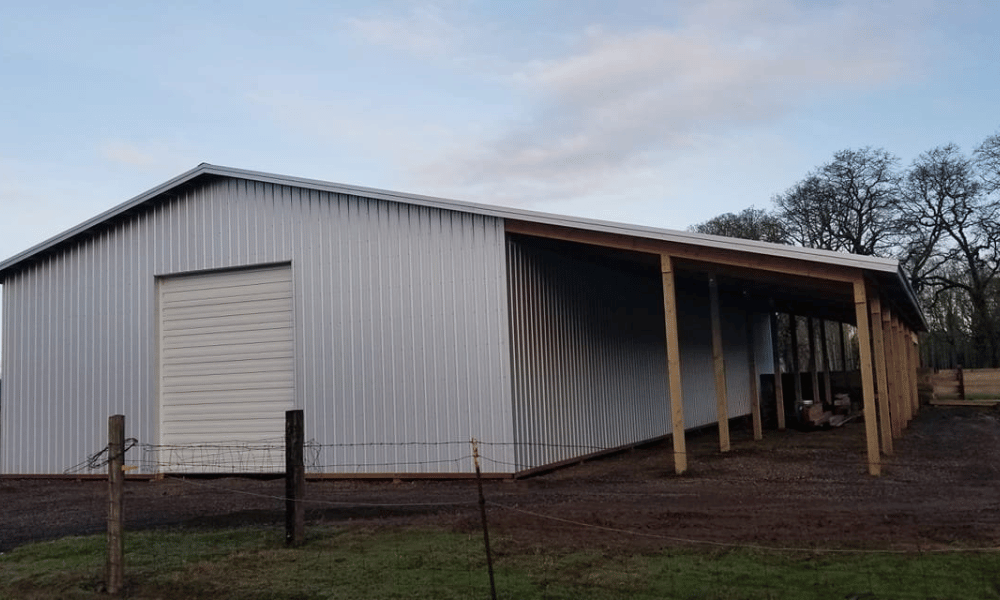Introduction
In the ever-evolving landscape of construction, making https://pastelink.net/gh2bmvmr informed decisions that stand the test of time is crucial. Whether you're a farmer in need of a sturdy barn, an entrepreneur looking for warehouse space, or simply someone with a vision for a personal retreat, you might find yourself asking: What’s the best building option for my long-term plans? Enter pole buildings—a construction style that has steadily gained traction in recent years. In this article, we will dive deep into the world of pole buildings, exploring their benefits, considerations, and why they might just be your best bet for future-proofing your investments.
The Basics of Pole Buildings
What Are Pole Buildings?
So what exactly are pole buildings? They're structures where vertical posts (or poles) are anchored into the ground to support the roof. This design eliminates the need for traditional foundations and allows for wide-open spaces without interior columns.
The Evolution of Pole Buildings
From basic agricultural structures to sophisticated commercial spaces, pole buildings have evolved significantly over time. Initially popularized by farmers needing quick and cost-effective solutions, these buildings have transitioned into versatile spaces that can serve various purposes.
Thinking Long-Term? Why a Pole Building Might Be Your Best Bet!
Investing in a pole building can be an astute decision if you're considering your long-term needs. They offer flexibility in use and can be adapted as your requirements change over time. But how do you know if it’s right for you?
Key Advantages of Choosing Pole Buildings
Cost-Effectiveness
When it comes to construction costs, pole buildings often come out on top. With fewer materials required and faster construction times, they present an affordable option without sacrificing quality.
Table 1: Cost Comparison (Pole vs. Traditional)
| Feature | Pole Building | Traditional Building | |-----------------------|---------------|----------------------| | Material Costs | Lower | Higher | | Labor Costs | Reduced | Increased | | Construction Time | Shorter | Longer |
Versatility in Design
Do you need more space later on? No problem! One of the standout features of pole buildings is their adaptability. You can easily expand or modify them—ideal for those thinking long-term.
Durability and Longevity
Pole buildings are built to withstand extreme weather conditions due to their design principles. Their elevated posts keep them above potential flooding zones, while robust materials ensure longevity.

Understanding the Construction Process
Site Selection
Choosing the right location is pivotal when constructing any building—pole structures included! Consider factors like accessibility, zoning laws, and your specific needs when selecting a site.
Foundation Options
While pole buildings typically require less extensive foundations than traditional structures, understanding your soil type and local climate will guide your foundation choices.
Pole Building Materials: What You Need to Know
Wood vs. Steel Structures
Are you debating between wood or steel poles? Each material comes with its own set of advantages and disadvantages:
- Wood: Naturally insulating but may require more maintenance. Steel: Extremely durable but can be prone to rust without proper treatment.
Permits and Regulations: A Necessary Evil
Navigating through local regulations can feel overwhelming. However, securing necessary permits is vital before commencing construction. Consult with local authorities to ensure compliance with zoning laws and safety standards.
Customizing Your Pole Building
Interior Layout Options
Unlike traditional designs where walls dictate layout possibilities, pole buildings offer freedom in creating bespoke interiors tailored to your needs—whether it's open storage or divided spaces for offices.
Exterior Finishes That Wow!
From siding materials to roofing options, customizing your exterior is part of what makes pole buildings so appealing! Choose from metal cladding to wooden finishes based on aesthetics or functionality.
Maintenance Tips for Long-Term Success
Routine Inspections
To keep your pole building in tip-top shape over the years, consider scheduling routine inspections focusing on key areas like structural integrity and potential pest infestations.
Seasonal Preparations
Different seasons bring different challenges—snow loads in winter or heavy rain in spring can impact your structure's longevity. Prepare accordingly by clearing gutters or reinforcing supports as necessary!
FAQs About Pole Buildings
Are pole buildings suitable for residential use?- Absolutely! Many homeowners opt for pole structures due to their versatility and cost-effectiveness.
- Depending on size and complexity, most projects can be completed within weeks rather than months!
- Fiberglass batts or spray foam insulation are popular choices; both provide excellent thermal protection while being easy to install.
- Yes! Many lending institutions offer financing options specifically tailored for construction projects like these.
- Certainly! One of the perks of a flexible design is that utilities can be added post-construction without major complications.
- Basic upkeep includes checking for leaks or pest issues regularly; addressing these problems early helps ensure longevity!
Conclusion
As we've explored throughout this article, investing in a pole building presents numerous benefits that cater not only to immediate needs but also provide long-term solutions as circumstances evolve over time. From versatility in design choices to cost-effectiveness during both initial investment phases and ongoing operations—the appeal is undeniable!
So if you're pondering whether investing now could yield dividends down the line— Thinking Long-Term? Why a Pole Building Might Be Your Best Bet! It might just turn out that this adventurous choice serves as an anchor point amid shifting tides—both literally and metaphorically—in your life’s journey ahead!